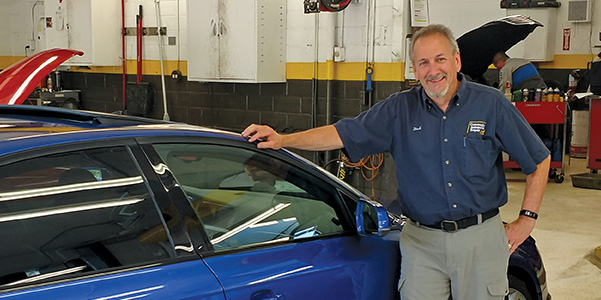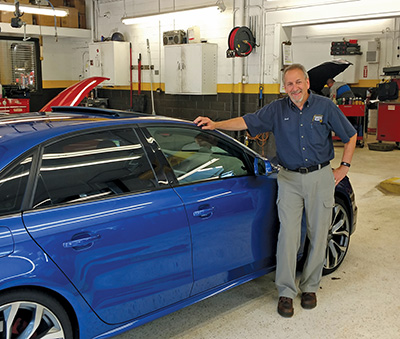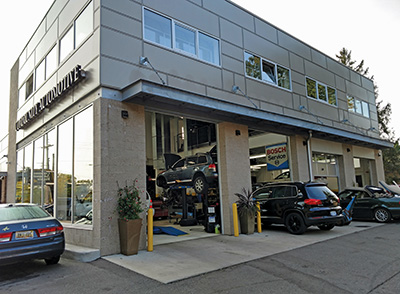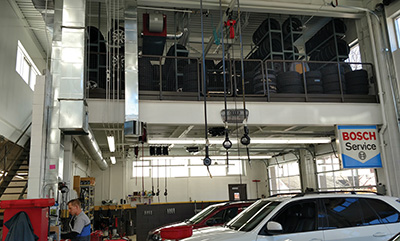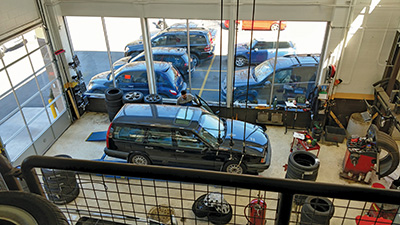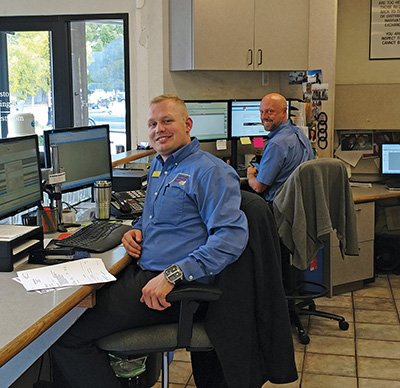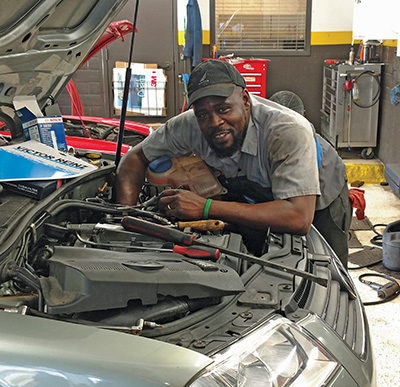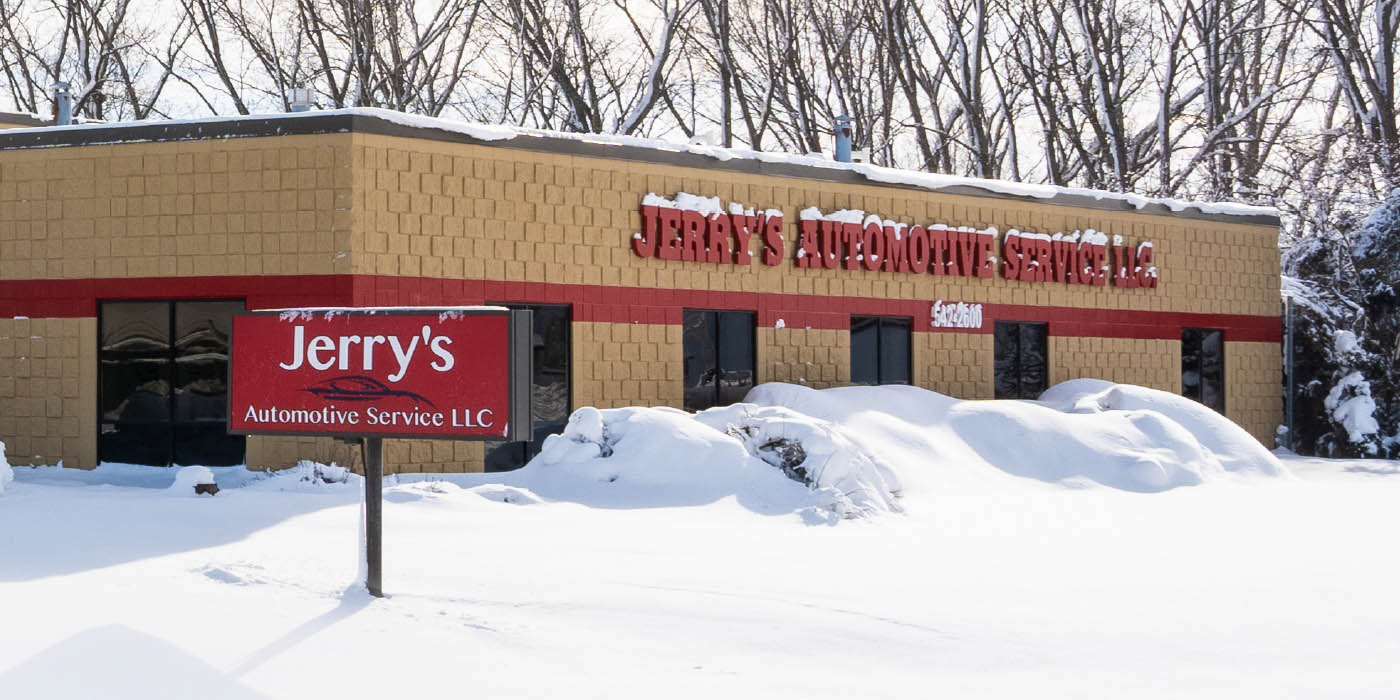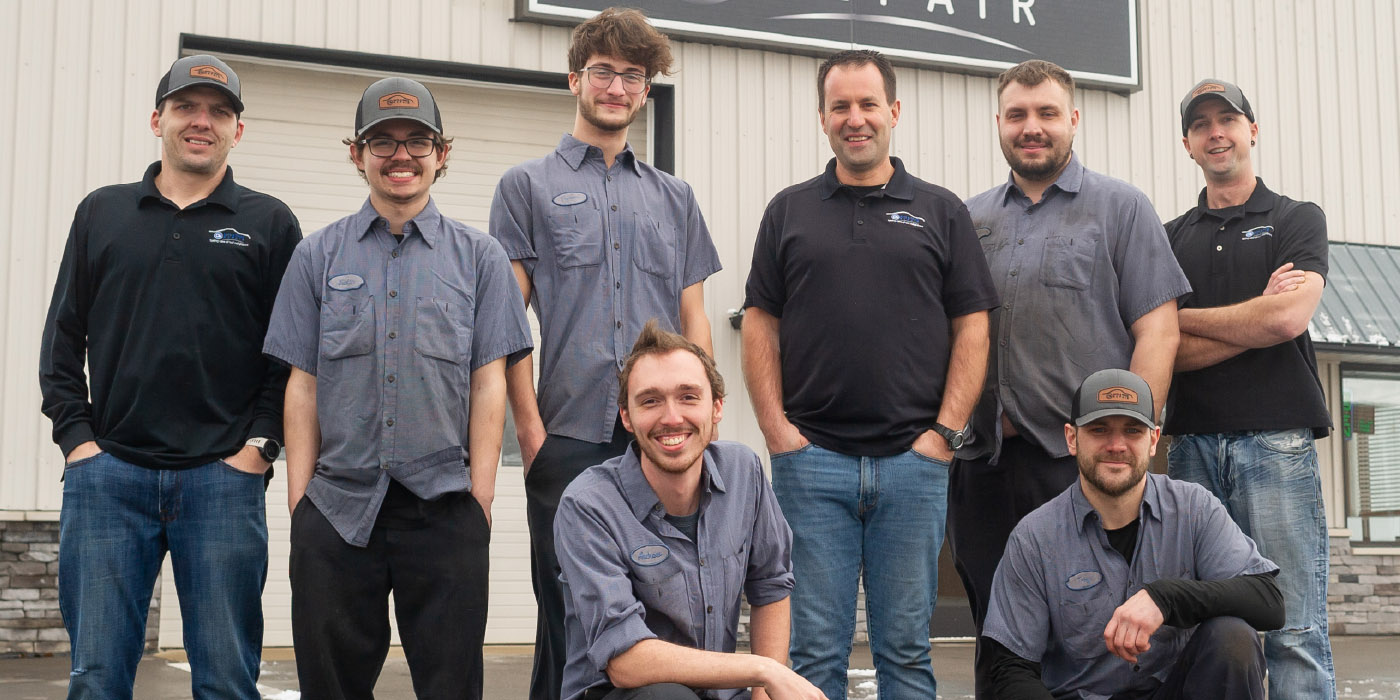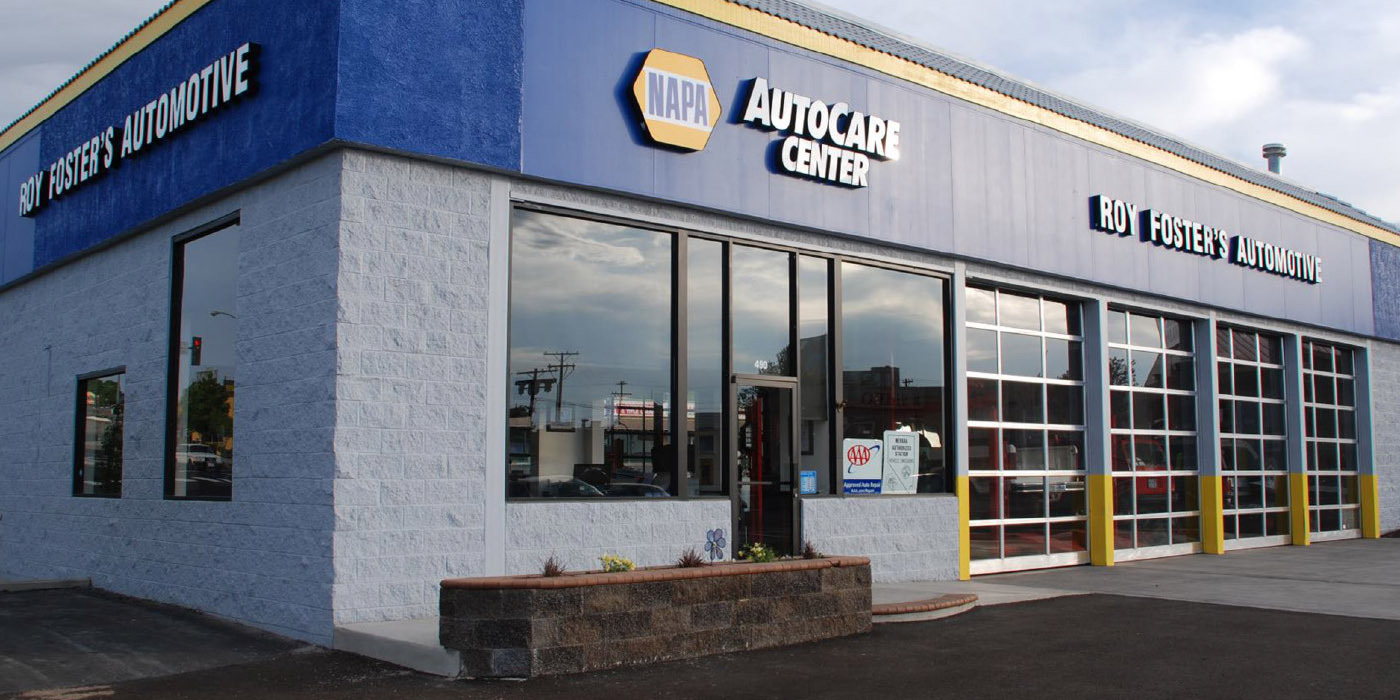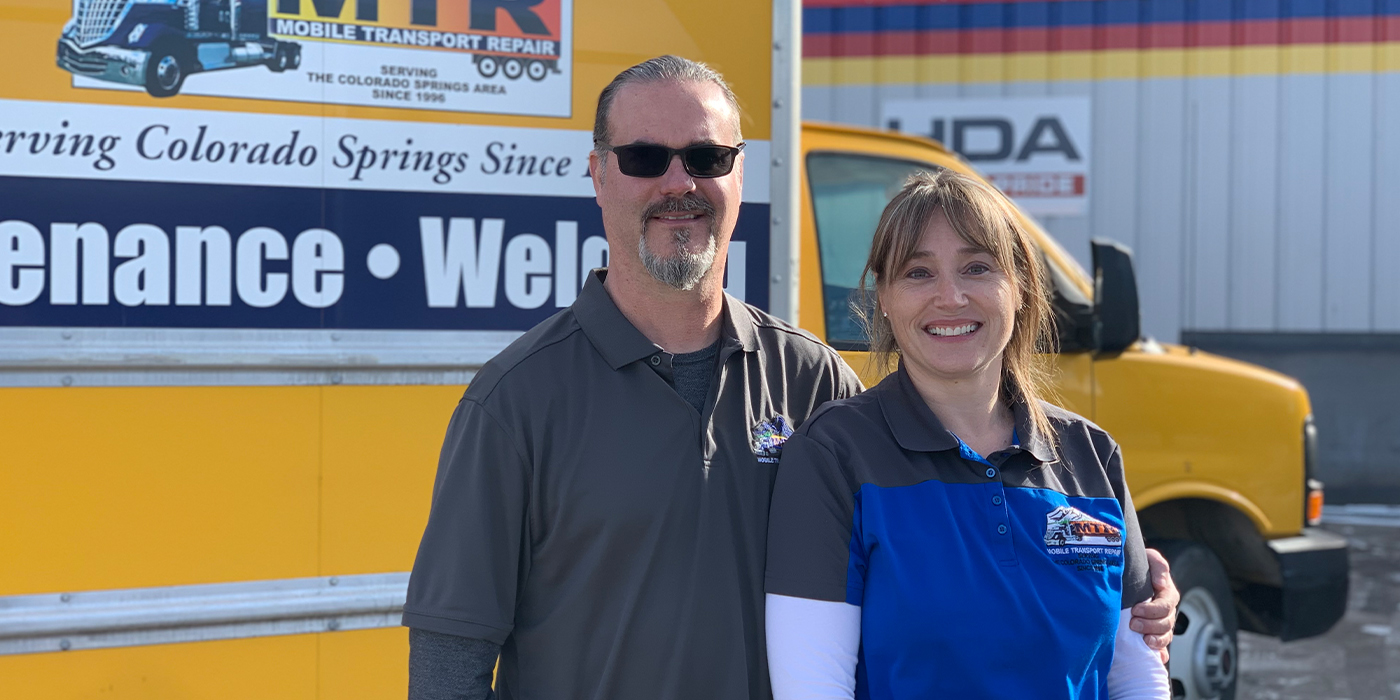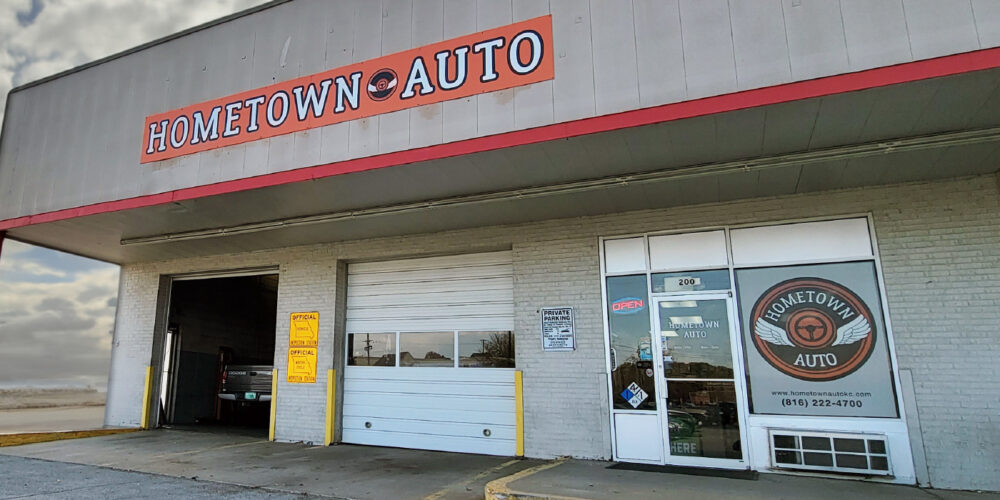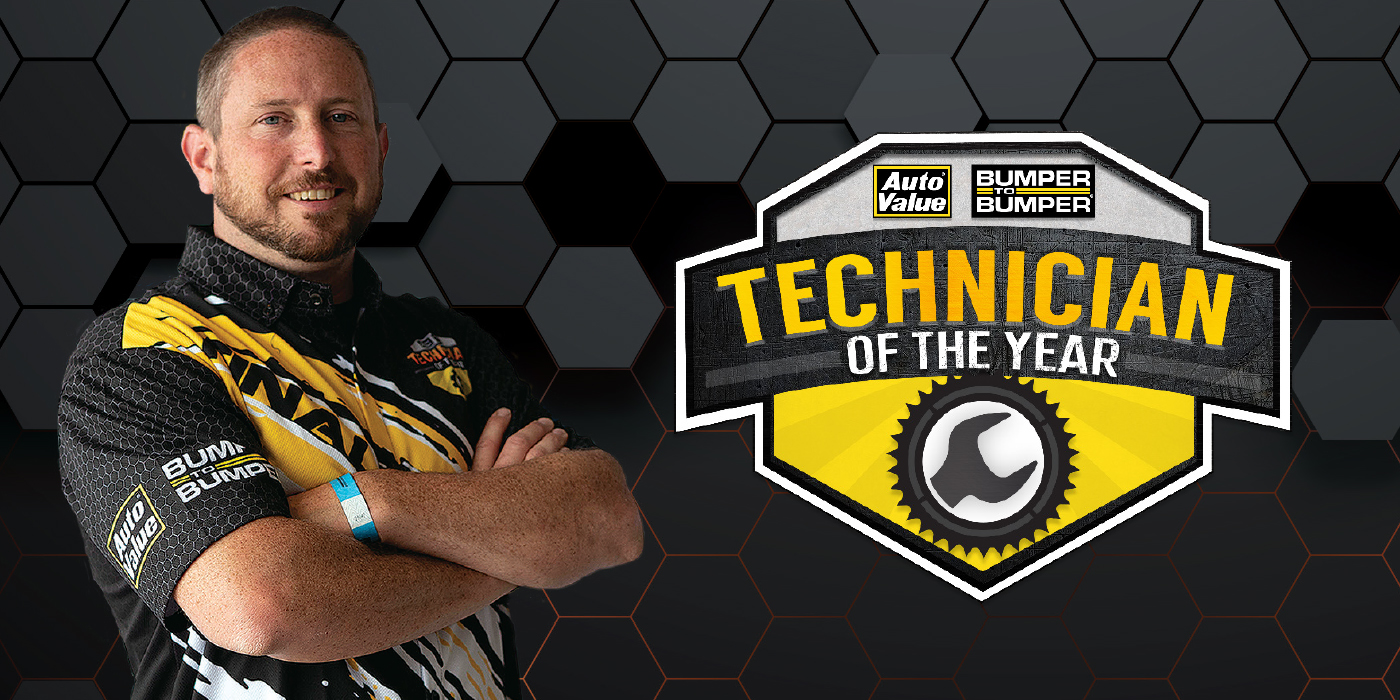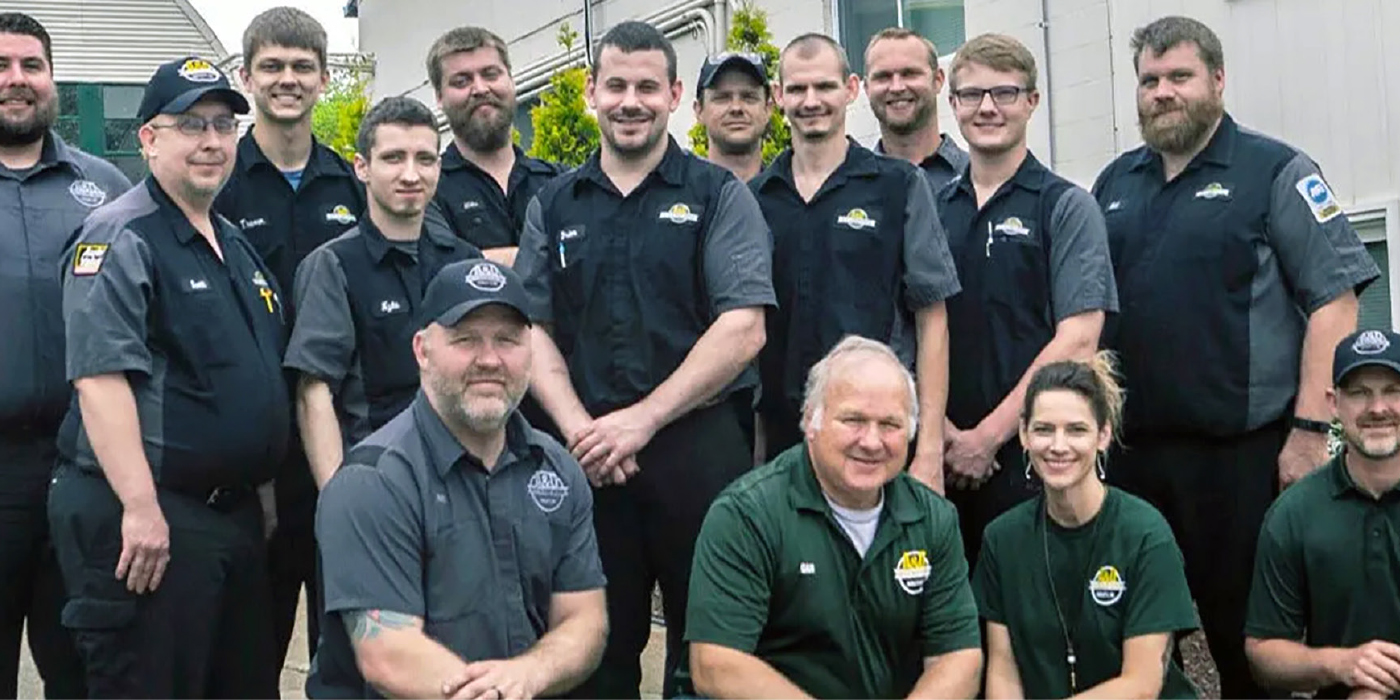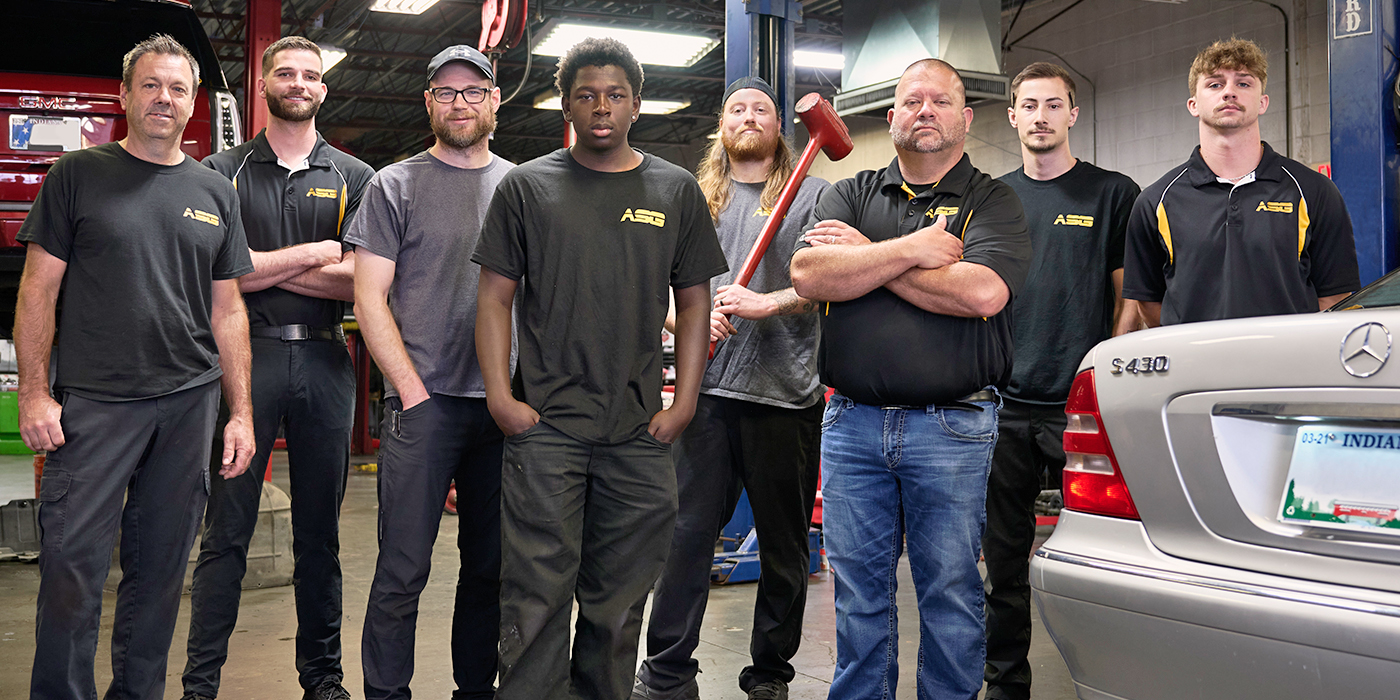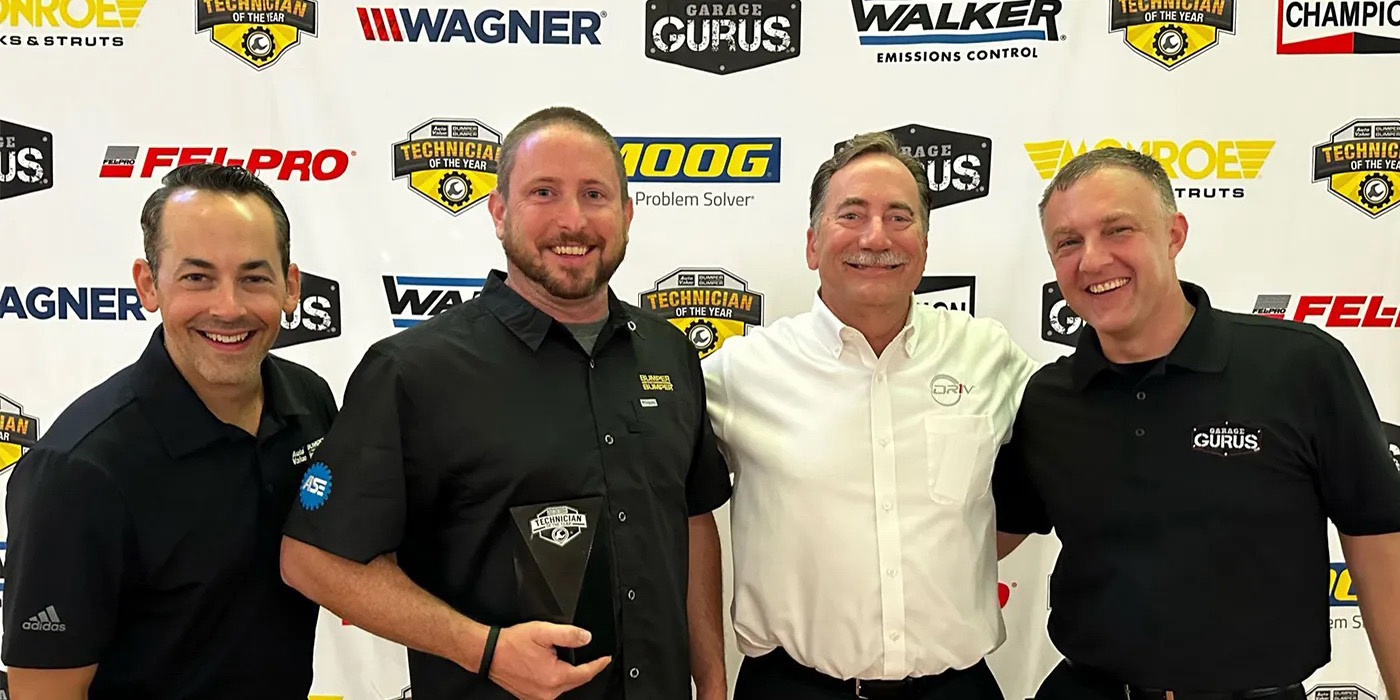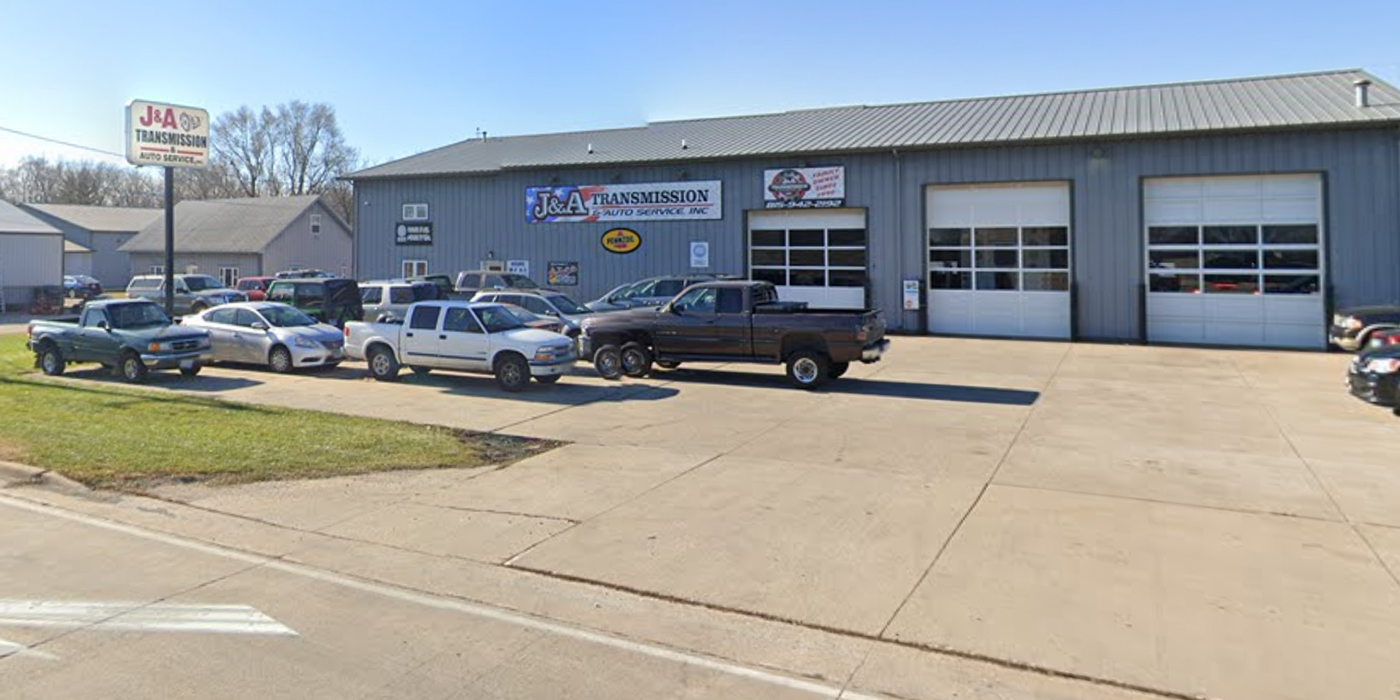Having been repairing European makes and models in Grand Rapids, MI, since 1975, Community Automotive Repair owner Dick Zaagman has learned how to navigate the automotive repair field, both in terms of customer service and employee retention. According to Zaagman, the best practices that work in one facet of shop management often translate to another.
Take shop appearance, for example. Many shop owners focus on whether or not the shop will make customers feel welcome and comfortable while their vehicle is being repaired. But Zaagman is quick to point out that technicians and service writers also want an inviting, positive atmosphere — after all, employees spend a large portion of their day at the shop.
“One of the main things we have done to retain and attract good employees is keep our facility modern and up to date,” he says. “Our most recent building renovation included adding four service bays and a second level for an employee break and meeting room. We have more than 200 windows in our facility, some extending nearly floor to ceiling.
“The goal with this design,” Zaagman continues, “was to increase the feeling of space, and to give employees a view that was more than just four walls. Our shop has been fully air conditioned for some time, which is clearly a benefit that many shops do not have. Giving employees a clean, modern, organized work environment gives them dignity and respect, which are basic needs we all have.”
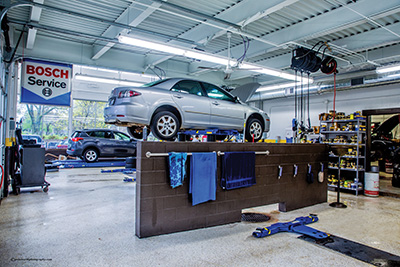
Those same floor-to-ceiling windows, Zaagman says, also appeal to customers. First impressions still matter.
“Customers have little to evaluate a shop with other than what they see,” he says. “The interior of our shop is painted white with a light-colored epoxy flooring. This, along with LED lighting and the over 200 windows in our shop, gives the shop a very bright and clean look for both customers and employees alike.”
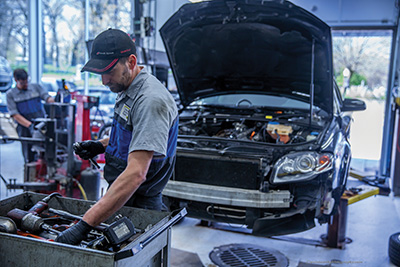
LEED Certification
While it added a significant cost to the project, acquiring LEED (Leadership in Energy and Environmental Design) certification was a priority during the shop’s recent renovation. At its core, the United States Green Building Council (USGBC) program was established to increase the value and environmental integrity of building projects.
“Our new building renovation was designed to meet certain requirements to obtain this certification,” Zaagman explains. “This meant sourcing building materials more locally, and using those that were made of certain products that were more environmentally sound.
“The disposal of all building material had to be done so that as much as possible could be recycled,” he continues. “Our heating and air conditioning had to be the most efficient available. LED lighting was used in all of our new construction, along with the installation of many windows to allow enough light to enter the building to allow us to turn off the lighting on some days. Our roof was replaced with a white rubber roof to reduce ‘heat soak’ from the sun.”
All of these efforts attracted attention and were additional to what Zaagman had been doing for many years: heating the shop with waste oil and recycling cardboard, paper and plastic.
“We have garnered positive publicity and local recognition,” he says. “Recycling and doing what’s right actually costs more sometimes. This is just the way we should be responsible in our businesses. Our LEED certification actually cost the business $30,000 to $40,000 more than if we had not made this choice. It was just the right thing to do.”
Attracting New Talent
The 12-bay shop currently employs seven technicians, including three ASE Master-certified technicians, one Volkswagen Master technician, two general technicians with ASE certifications, and one tire and oil change technician. Zaagman says when the shop does have a need for a new tech, they look to several different sources to find the right candidate for the job.
“The key is to use every possible recruiting method available since there are no ‘best’ methods,” he says. “There are many spokes to the recruiting wheel, and all of them have to be in place. None of them are worth much in isolation. The key factor is committing your time to recruiting. It takes lots of time. Gone are the days when you could post an ad on Craigslist for free and actually get some possible candidates.”
That list includes Indeed, LinkedIn, ZipRecruiter, iATN and Facebook ads. Zaagman also says shop owners shouldn’t hesitate to get creative — and put their money where their mouth is.
“Talk to every parts counterperson, parts rep and tool rep and offer them a finder’s fee,” he suggests. “Give them $2,000 if they find someone you end up hiring, and another $2,000 if that person is still employed with you in six months. That sounds like a lot of money, but who is going to refer a tech to you and be mindful of your need without some motivation? Would you be willing to pay $4,000 to find a tech? We lose more than that every week we have a position that isn’t filled.”
Zaagman says having a positive shop reputation can also entice a dealer technician to make the switch to an independent shop.
“My most recent employee came to us from the local VW dealer,” he says. “He was their lead technician — a VW-certified Master technician. My experience is that moving technicians from a dealer environment to an independent is an uphill battle.
“One piece that went a long way for us in attracting this employee was our reputation,” Zaagman continues. “Dealers are generally not impressed with independents, and rightly so in many cases. This employee had never heard anything negative about us and, actually, I believe we are well respected at this dealer. I’m sure this played a part in the employee making the move to come to our shop.”
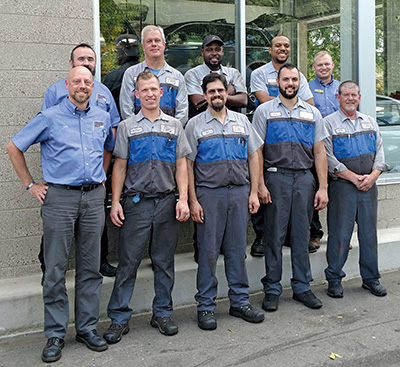
Attracting Customers
While the shop’s specialty of repairing European cars already makes it stand out from the competition, Zaagman is still strategic about marketing, mainly through online avenues.
“We do use direct marketing, but have greatly scaled back this strategy, and now focus most of our marketing dollars on our website and social media,” he says. “When working on European cars, thinking about how your website looks can make a big difference on the results you get.”
Zaagman says owners of European cars are looking for a shop with specific experience working on their type of car. They’ve invested more in their transportation, he says, because their car means a lot to them.
“One way we have tried to accomplish building confidence in our abilities and experience is by putting photos on the website of the cars we actually work on at our shop,” he says. “These are not photos of nice cars found on the Web, but our customers’ cars serviced at our shop. What better way to communicate that we have the experience they are looking for?”
After curating an attractive site, it’s imperative to keep a watchful eye on it, says Zaagman. Constantly staying on top of website and search engine performance is critical to running a shop today.
“We’ve invested and continue to invest in our website,” he says. “We have found this to be one of the best ways to draw new customers. Having a mobile-friendly site where customers can make appointments is important, as is SEO optimization. Coming up in the top three on the first page of a search is our goal.”
Monitoring reviews online — both good and bad — is also important, as every one of them can impact someone’s decision to visit the shop.
“We respond to each and every review, good or bad,” Zaagman says. “The bad ones always get a phone call, assuming we can determine who posted the review.”
Once someone makes the decision to come to Community Automotive Repair, Zaagman says the staff goes out of its way to keep them coming back.
“We offer ‘on demand’ shuttle service for our customers and promote this by asking each of our customers if they will be needing a ride to work or home,” he explains. “We also have five rental cars and charge $20 per day for one, unless we have a delayed repair or a comeback. On top of this, we try to wash all of our customers’ vehicles before they leave the shop.”
Industry Associations
Aside from the successful shop programs Zaagman and his staff have established, he says he relies on outside support from various organizations in the automotive aftermarket.
“We belong to ASA, and they help us with the various compliance issues we face and are involved with legislative advocacy,” Zaagman says. “The organization that has helped us the most is Elite Worldwide. The Elite Pro Service has been a tremendous help to me over the years. Having a number of colleagues working as a ‘board of directors’ for my business has been a great help. Pro Service has given me the opportunity to improve my business while helping others improve theirs. Sharing ideas, problems and solutions has been invaluable to the success of my business.”
Some of Zaagman’s best advice to other shop owners? Set goals for every area of your business.
“Not just financial goals, but also objectives for employees and customer service,” he concludes. “Know where you are going and how you plan to get there. Don’t settle for average. Strive to be the best in all you do. Set aside your ego, be willing to admit when you need help or when you are wrong. And, finally, the customer is always right, even when they are wrong.”

